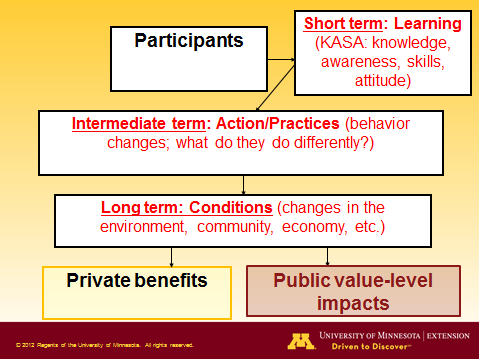In the diagram below, I map the outcomes section of the University of Wisconsin Extension logic model to the components of a public value message. In the parlance of the UWEX model, learning outcomes are short-term, behavior changes are medium-term, and condition changes are long-term.
Participants in two recent seminars–one for the UM Center for Integrative Leadership and one for Penn State University’s Agricultural Extension and Education program–challenged this pattern. They argued that some programs may generate public-value-level outcomes in less time than it takes other programs to generate behavior changes. In these cases, doesn’t labeling the outcomes as short-, medium-, and long-term cause confusion?
I think this is a useful point. What matters for the generation of public value is that the desired community-level condition changes are achieved, not how long it took to get there. If a program is able to alter economic, social, civic, or environmental conditions in ways that matter to critical stakeholders, then those impacts can be the basis of a public value message, even if they arose in the course of weeks or months, rather than the years or generations it may take for other programs to see impacts.
